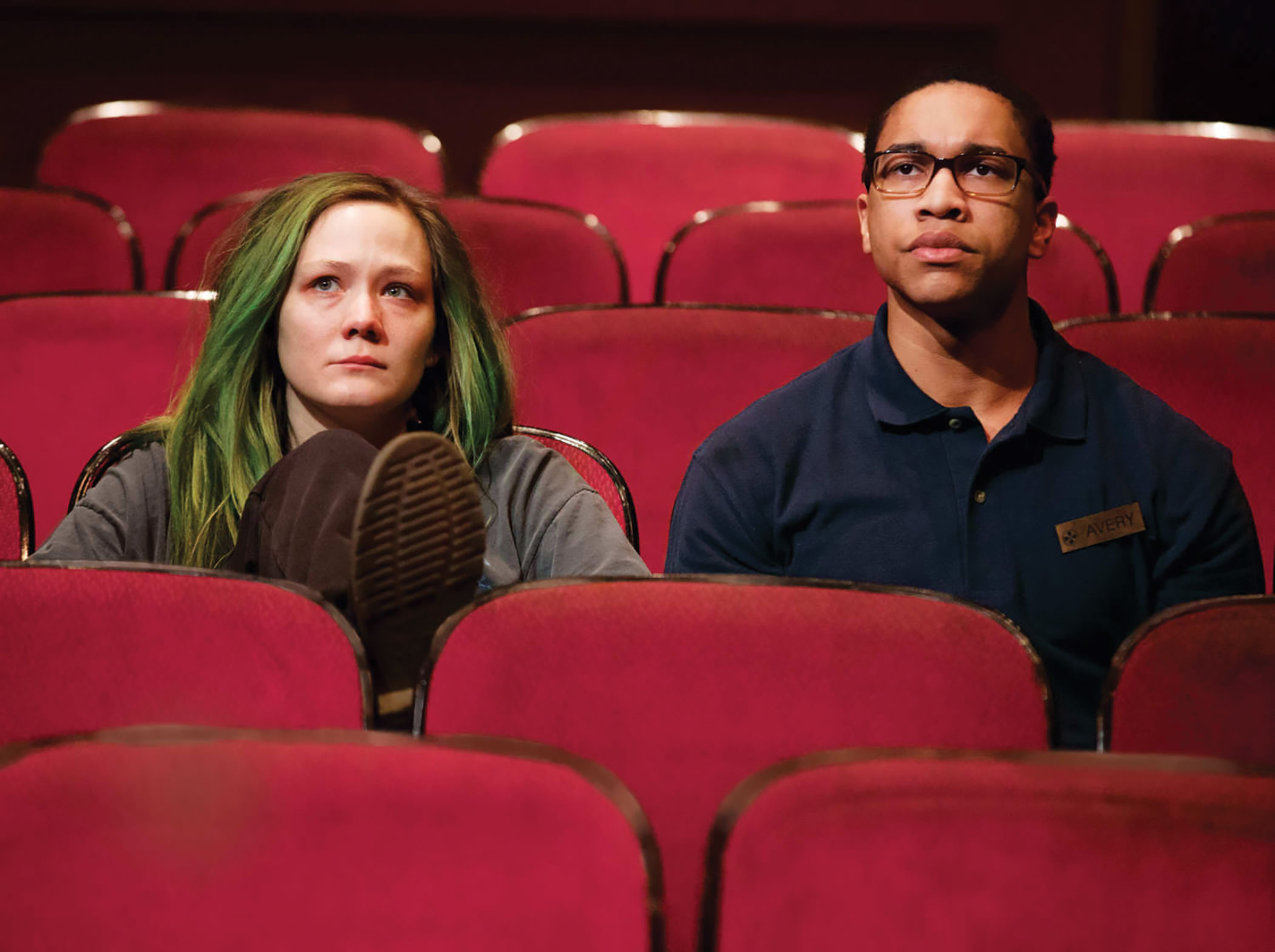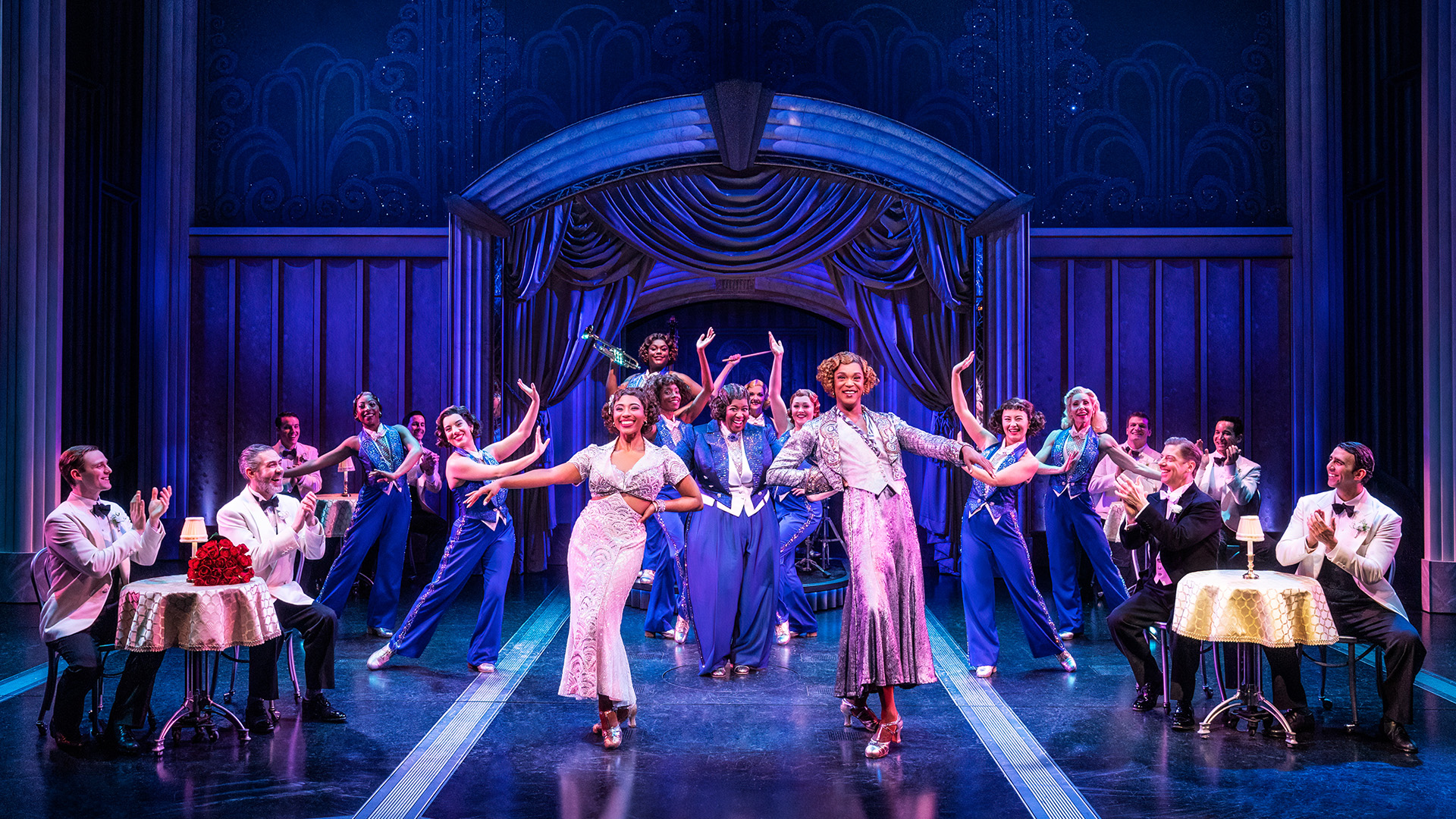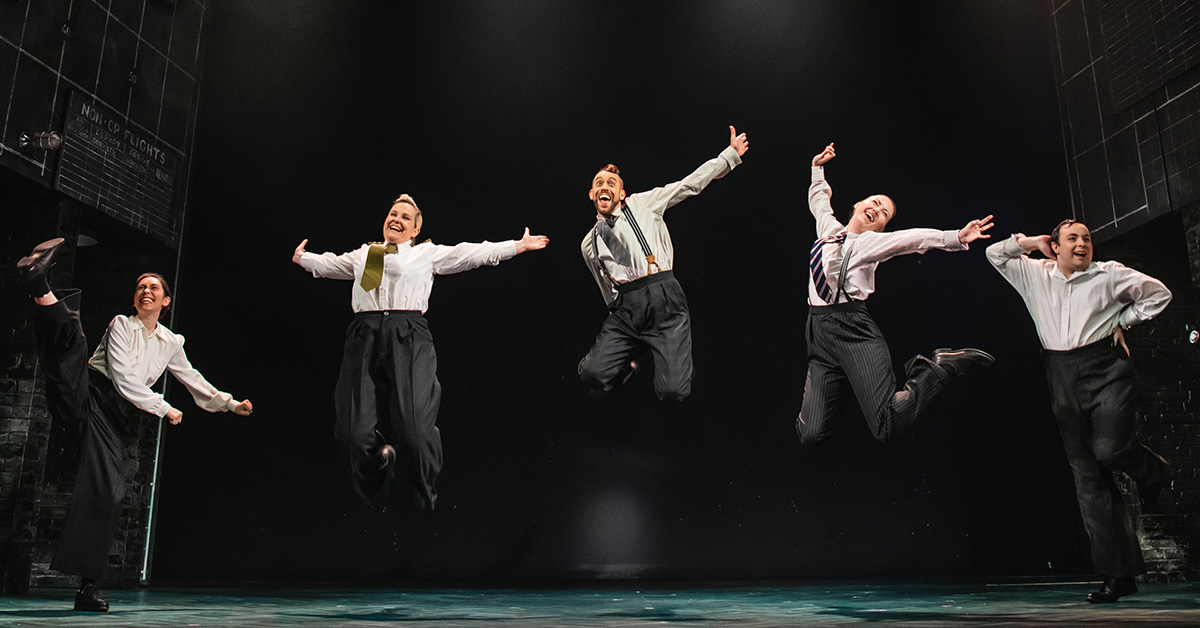
As actors, we are often told to “act faster” or to “act on the line, rather than in between the lines.” “Louder, faster, funnier” is a phrase that has infiltrated many rehearsal spaces, and it is one that has not always gained the desired effect from the user of said phrase. Annie Baker’s The Flick teaches us quite the opposite when it comes to play-acting, subtlety, and nuance.
When I first read the script, preparing to direct The Flick, the words immediately came to life off the page as a result of Ms. Baker’s knack for honest dialogue and attentive care for stage directions. After a week of table work and an initial read-through, I knew this particular show would be a treat for myself and the cast of Playhouse on the Square’s production of The Flick. While we explored the depths of Ms. Baker’s work, I not only grew as a director; I gained an invaluable lesson in the art of pauses and silences in theatre.
For those who may not have read or seen The Flick, the play opens with a scene in which two movie theater employees sweep and clean the run-down theater using very little dialogue. This first scene can be a true test of an audience member’s patience, and it was not uncommon to lose an audience member or two who simply could not handle the silence and monotony of these two common men doing very little. Annie Baker challenges the audience from the first scene; an audience that nowadays is seeped in social media and has a waning attention span.
But for so many Millennials, this Pulitzer Prize-winning play has become a favorite, primarily due to the fact that the show is about young people stuck in the doldrums with no clear sign of where to go or what to do with their lives — a theme to which many twenty-somethings can relate. However, The Flick is more than that. It speaks to universal truths about unlikely friendship, loyalty, ambition, fear of rejection, casual racism, lost dreams, and so much more. These themes manifest themselves through workplace conversations, but they are also hidden between lines of dialogue, within the silences and pauses Baker has masterfully crafted into the show.
During rehearsals we took note of Ms. Baker’s specifics regarding a pause, quick pause, silence, or long silence. Differentiating between the various breaks in dialogue, the cast and I were tasked with uncovering the true meaning behind these lulls in speech and getting to the root of why the time taken was so necessary and precious. Allowing the actors to take their time, a beautiful freedom developed in their onstage behavior that made Ms. Baker’s choice words resonate and land harder and deeper than they would have if the cast simply “acted faster.”
This play is a slow simmer that comes to a boil, and the success of the show hinges on honoring Ms. Baker’s words and timing. Ms. Baker’s The Flick has received almost unanimous praise from critics and theatre buffs, but there is a learning curve with audiences that have a certain expectation of how theatrical dialogue and pacing should flow. Like all great theatre, The Flick challenges traditional form and, hopefully, lays the groundwork for a new wave of American playwrights to do the same.
To purchase a copy of The Flick, click here, and to learn more about licensing a production, click here.

The Latest from @ConcordShows: Spring ’24

The Latest from @ConcordUKShows: Spring ’24

